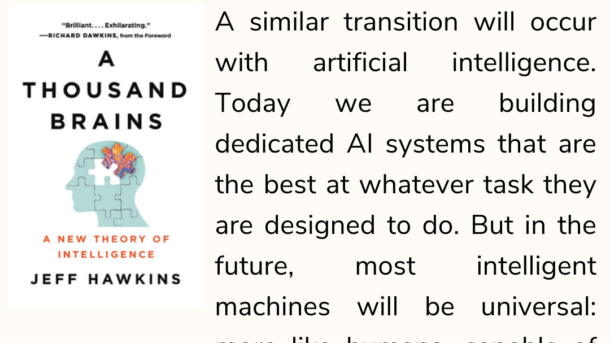The situation we are in today reminds me of the early days of computing. The word “computer” originally referred to people whose job was to perform mathematical calculations. To create numeric tables or to decode encrypted messages, dozens of human computers would do the necessary calculations by hand. The very first electronic computers were designed to replace human computers for a specific task. For example, the best automated solution for message decryption was a machine that only decrypted messages. Computing pioneers such as Alan Turing argued that we should build “universal” computers: electronic machines that could be programmed to do any task. However, at that time, no one knew the best way to build such a computer. There was a transitionary period where computers were built in many different forms. There were computers designed for specific tasks. There were analog computers, and computers that could only be repurposed by changing the wiring. There were computers that worked with decimal instead of binary numbers. Today, almost all computers are the universal form that Turing envisioned. We even refer to them as “universal Turing machines.” With the right software, today’s computers can be applied to almost any task. Market forces decided that universal, general-purpose computers were the way to go. This is despite the fact that, even today, any particular task can be performed faster or with less power using a custom solution, such as a special chip. Product designers and engineers usually prefer the lower cost and convenience of general-purpose computers, even though a dedicated machine could be faster and use less power. A similar transition will occur with artificial intelligence. Today we are building dedicated AI systems that are the best at whatever task they are designed to do. But in the future, most intelligent machines will be universal: more like humans, capable of learning practically anything. Today’s computers come in many shapes and sizes, from the microcomputer in a toaster to room-size computers used for weather simulation. Despite their differences in size and speed, all these computers work on the same principles laid out by Turing and others many years ago. They are all instances of universal Turing machines. Similarly, intelligent machines of the future will come in many shapes and sizes, but almost all of them will work on a common set of principles. Most AI will be universal learning machines, similar to the brain. (Mathematicians have proven that there are some problems that cannot be solved, even in principle. Therefore, to be precise, there are no true “universal” solutions. But this is a highly theoretical idea and we don’t need to consider it for the purposes of this book.) Some AI researchers argue that today’s artificial neural networks are already universal. A neural network can be trained to play Go or drive a car. However, the same neural network can’t do both. Neural networks also have to be tweaked and modified in other ways to get them to perform a task. When I use the terms “universal” or “general-purpose,” I imagine something like ourselves: a machine that can learn to do many things without erasing its memory and starting over. There are two reasons AI will transition from the dedicated solutions we see today to more universal solutions that will dominate the future. The first is the same reason that universal computers won out over dedicated computers. Universal computers are ultimately more cost-effective, and this led to more rapid advances in the technology. As more and more people use the same designs, more effort is applied to enhancing the most popular designs and the ecosystems that support them, leading to rapid improvements in cost and performance. This was the underlying driver of the exponential increase in computing power that shaped industry and society in the latter part of the twentieth century. The second reason that AI will transition to universal solutions is that some of the most important future applications of machine intelligence will require the flexibility of universal solutions. These applications will need to handle unanticipated problems and devise novel solutions in a way that today’s dedicated deep learning machines cannot.
Hawkins reckon that Artificial Intelligence is still in the early phase of its development. Just like how computers were once specialized machines that could only be used for specific cases, AI systems are now still in a relatively rudimentary phase and can be deployed to very specific situations. What’s next is getting to a point where machines are able to learn practically anything and handle different tasks without needing to be trained or set-up by humans. You wouldn’t need to train an AI to learn how to play a new game, they simply would be capable of learning on its own.
Its hard for any of us to visualize what that kind of future would ever look like simply because it hasn’t happened yet. There are also many differing opinions from the experts. Many have said that Artificial Narrow Intelligence (i.e the kind that focuses on 1 specific task such as an e-commerce recommendation engine) is probably most likely the one we can expect to see being dominant and widely used in our lifetimes. Artificial General Intelligence (more the kind like the Terminator), is where many experts differ and some expect that it will probably never be happen in our lifetimes.
Just like how computers relied on the exponential increase in the computing power of chips to truly become ubiquitous and universal, AI will need a similar catalyst.



